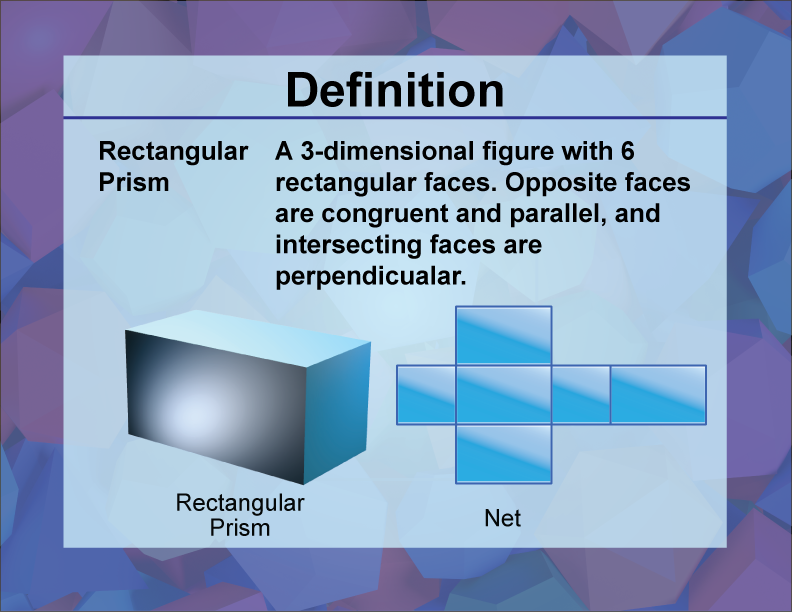
Display Title
Definition | 3D Geometry Concepts | Rectangular Prism
Display Title
Rectangular Prism

Topic
3D Geometry
Definition
A rectangular prism is a three-dimensional figure with six rectangular faces, where opposite faces are congruent and parallel.
Description
The rectangular prism is a fundamental shape in three-dimensional geometry, serving as a building block for understanding more complex 3D structures. It is characterized by its three dimensions: length, width, and height, which are clearly labeled in the image. This shape is ubiquitous in both natural and man-made environments, making it a crucial concept for students to grasp.
In the study of 3D geometry, rectangular prisms play a vital role in introducing volume calculations, surface area computations, and spatial reasoning. They provide a concrete example of how two-dimensional shapes (rectangles) can be extended into three-dimensional space. Understanding rectangular prisms lays the groundwork for exploring more advanced geometric concepts such as cross-sections, projections, and transformations in three dimensions.
Rectangular prisms are also significant in practical applications, from architecture and engineering to packaging design and computer graphics. Their regular shape makes them ideal for efficient storage and transportation, which is why many everyday objects, from books to shipping containers, take this form. By mastering the properties of rectangular prisms, students develop skills that are applicable across various fields and prepare themselves for more complex geometric analyses in higher mathematics and real-world problem-solving scenarios.
For a complete collection of terms related to 3D geometry click on this link: 3D Collection.
| Common Core Standards | CCSS.MATH.CONTENT.5.MD.C.3 |
|---|---|
| Grade Range | 4 - 6 |
| Curriculum Nodes |
Geometry • 3D Geometry • Rectangular Prisms |
| Copyright Year | 2013 |
| Keywords | three-dimensional geometry, 3d Geometry, defnitions, glossary term |